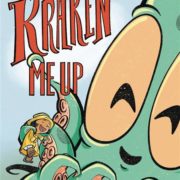Rikers: An Oral History by Graham Rayman and Reuven Blau
A perk of landing at New York City’s LaGuardia Airport is the resplendent rollout of the Manhattan skyline. As you descend into the maw of a great city, you’ll find it outside your left window. Taking off from LaGuardia, you’ll find another famous—albeit grimmer—NYC scene, this time just outside your right window: Rikers Island.
There’s exactly one narrow bridge leading to the East River island. And if you’re on it, leaving Queens, it means you’re heading to New York City’s largest jail complex. It’s been in operation for almost a hundred years and has, over the decades, become known by its prisoners as the “House of Dead Men.”
In Rikers: An Oral History, journalists Graham Rayman and Reuven Blau show what life is like inside the jail by sharing the experiences of both prisoners and staff. While the inmate population is constantly in flux, the average prisoner staying around four months, violence is a constant. Regardless, whether the account is via a prisoner, a correctional officer, or a warden, taken all together, it’s a tale of horror.
Before a new prisoner is sorted into a specific jail (there are ten jails total for men, women, and adolescents), joining a total prison population of around 5,000, there’s the intake process. A recurring theme for new arrivals, including staff, is noticing the abject filth. Prisoners are placed in “holding pins” that are filled to capacity and then some. If you actually get a seat, consider yourself lucky. One former inmate states that “it’s crazy,” a pin filled with 60 prisoners, some of them on their third day of waiting for a jail assignment; plus, some are dope sick in a jammed-pack pin where the plumbing has long since stopped working.
Once in a jail, it—as with any jail—is a world unto itself. If you happen to be a member of a gang that has number superiority on a tier, life will be easier for you than for someone who’s not similarly gang affiliated. This is especially true when it comes to phone access. Throughout the book there’s a consistent theme: gangs control who gets to use the phones, not the officers. In fact, historically, some of the officers have been gang members themselves. In the summer, there’s the risk of heat exposure in some cells. (One inmate died from the heat, a jail official actually saying, “He basically baked to death.”) There’s a chapter on the prison’s food, which I wish I had skipped.
This book is supposed to be a tough read, forcing us to face what incarceration actually looks like. And when it comes to reading about the treatment of the adolescents (and the mentally ill) inside Rikers, it almost shatters your belief in humanity. According to accounts, incarcerated teens were often forced to fight each other, which was unofficially sanctioned, if not outright encouraged, by guards. The adolescent jail became known as “gladiator school.”
One teen was held in Rikers for three years without a trial. (His parents couldn’t afford to make his bail.) Once released, the trauma of the experience was the stated reason for his suicide. What was the alleged offense that led to his lengthy incarceration? He stole a backpack.
It’s important to keep in mind that most of the prisoners in Rikers have yet to have their day in court. In fact, many wait so long for a court date, it’s faster to plead guilty, whereby credit for time served allows for an expedited release. Of course, doing so means they now have a record that will absolutely be used against them in the future. On the revolving-door nature of the system, one judge says, “I feel like I’m handing out a life sentence to these people, but I’m doing it thirty days at a time.”
One older ex-cop from Barbados refused to plead guilty, stating that he was charged with “steering.” His arrest went like this. While sitting on his stoop in Brooklyn, a man approached him asking to buy drugs. The ex-cop told him that such activity did not happen on his corner, that he would have to go down to a different corner. Thus, “steering” the man to an illegal drug purchase. He refused to admit that he did anything of the sort, sitting in Rikers for two years before the charges were dropped.
Humanity is a scarce resource behind prison walls. But educational programs, especially theater and poetry courses (not surprisingly, humanities courses both) are often brief lifelines to inmates, guilty or innocent. One inmate says, “the most horrible thing about being locked up is that you are dehumanized on a daily basis. In order to navigate the experience, you have to normalize the dehumanization. You have to buy into it in order to survive. Once you internalize it, you project it outward. If you are being dehumanized, that’s how you treat other people. That to me is the essence of incarceration: having to buy into the dehumanization.”
The New York City Council voted to close Rikers by 2026. The experiences in this book certainly seem to underscore that decision. But there’s still the question: Then what? That’s where opinions diverge dramatically.
Until then, Rikers is a reality, and there’s still one piece of advice older inmates sometimes dispense to younger inmates. When it’s time to leave Rikers and you’re on that narrow bridge out, don’t look back. “Don’t ever look back or else you’ll come back.”
Reviewed by Jason Sullivan










